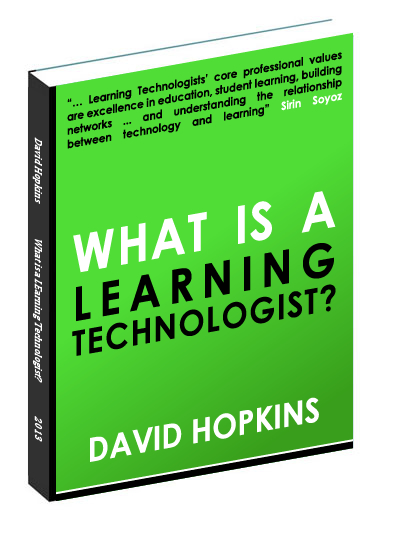It’s not a race
Two tweets have stood out for me this week that I want to connect. One from Seth Godin (my tweet, his blog post – please read it). Seth is “a teacher, and I do projects”. The other tweets was from Alejandro Armellini, Dean of Learning & Teaching at the University of Northampton.
Here are the tweets.
It’s not a race, it’s a journey. @ThisIsSethsBlog https://t.co/fxFKPEIDqF
— David Hopkins (@hopkinsdavid) June 13, 2018
We should be critical of “technology-enhanced” learning. Default setting: technology enhances things.Does it always? Should we therefore talk about book-enhanced learning? Pencil-enhanced learning? What matters is how & why we use things, not the tech itself #FutureEdTech #LTSF18
— Alejandro Armellini (@alejandroa) June 12, 2018
Why, I hear you ask, these two? Well, for me, they both link back to the same thing … the appropriate and considered approach to using and implementing new technologies or new systems for learning. That learning can be a classroom, a library, online, coffee shop, etc. It doesn’t matter.
Seth wrote about giving up when you get behind, about never reading as many books as someone else, about website traffic so just give up:
“Should you give up?
There are people who have read far more books than you have, and you will certainly never catch up.
Your website began with lousy traffic stats, in fact, they all do. Should you even bother?
The course you’re in–you’re a few lessons behind the leaders. Time to call it quits?”
Linking this to Ale’s tweet, about technology enhancing learning. About the default setting of always looking to the new, the shiny, the different, the ‘cutting-edge’ or ‘leading research’ in designing and delivering meaningful or quality learning. For me these two are linked … we should not always look ahead at new ideas, ideals, or technologies, just as we should not always look back at try and stay 2-steps behind everyone else. We, the learning technologists, the instructional designers, the learning and development managers, the content delivery teams, should look both forward and back – learn from our journey to date (successes and failures), learn about where we are, learn about where we could be going.
More importantly, we should also be learning about how to get there. How do we take an existing course, module or unit and make it better. Who defines what ‘better’ is? Who decides whether it’s to strip out an activity because it didn’t’ work (was it the activity or the students? Let it run again and see if a different cohort has a different experience) or to update an activity because it relies on ‘old(er)’ technology. How do we decide what to take out or leave in? Do we rely on our knowledge of what is pedagogically ‘sound’ and ignore what the students didn’t ‘like’? Is liking an activity or it being popular enough of a motive to keep it in the course if it’s not getting the results?
Ultimately, we (faculty, learning technologists, instructional designers, etc.) have to make many of these decisions based on our experience of what works (or not), and of what is good pedagogical practice (or not). New technology solutions, be they hardware or software, should still be rigorously tested and trailed to make sure it fits the learning, the policies for 3rd party tools, data compliance (who mentioned GDPR?), etc.
It’s not a race. We’re not trying to do something before someone else does, or we shouldn’t be, and we’re not trying to beat someone to the finish line … in fact we’e all got different ideas of what the finish line is anyway. The key is and always has been to find a good use of technology that fits the intended purpose or intended learning, that is appropriate for the audience and their technical competence, that is appropriate for the time for study and subject to be studied.
Let’s not rush to force technology, of any strand, into the learning. It’s better to understand both purpose and implementation, work on the foundation to build a solid stable solution upon, get them both right and the technology will take a backseat for the actual learning.
Image source: Chrissy Hunt (CC BY-NC-ND-2.0)


















